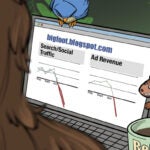Here’s today’s AdExchanger.com news round-up… Want it by email? Sign up here.
Take Rate Takeaways
The fees collected by intermediaries in the ad supply chain vary widely, according to new research from consulting firm Adalytics. On one extreme, they could leave publishers collecting as little as 2% of a buyer’s bid price, Morning Brew reports.
But how instructive is the data?
According to Adalytics, SSPs and DSPs collect, on average, 35% of programmatic spend. One out of four ad impressions saw 46% of ad spend going to a DSP, SSP or both.
The research also found SSPs charged lower fees for ads on clickbait sites compared to ad inventory from publishers with “niche but high-value audiences” (aka actual news sites). That’s alarming for brands that optimize toward low-fee supply, since this finding means they would end up advertising on lower-quality sites.
Although the study provides some food for thought, it’s questionable how much insight can be gleaned from blindly evaluating average take rates across different campaigns and formats. Take rates are lower on CTV and video, for instance, where the CPMs are higher. Expensive data might be applied to cheap media – creating a dramatic take rate disparity for low-quality inventory that would never occur on a big-name news publisher that earns its keep.
A Fee For Thee, Not For Me
Companies like Microsoft and Meta are among the loudest to decry high app store and mobile operating system fees.
But would they be less usurious?
Early returns indicate no. Just look at the metaverse and gaming platforms they support, writes Casey Newton at his newsletter, Platformer.
One year ago, Facebook told Newton it wouldn’t initially take commissions on creator revenue, underscoring Apple’s burdensome 30%. Zuckerberg himself promised that when Facebook did institute fees, they’d be lower.
But Meta is taking a commission on developer revenue on the Oculus platform – and it’s 25%.
Facebook insists that reporters refer to it as “Meta,” but slips its own commitments by saying old promises only apply to Facebook proper, not the rest of the business. Facebook’s 25% cut is also hardly a power differentiator from Apple.
Tim Cook cried out against “surveillance advertising” during his IAPP keynote in Washington, DC, this week. But Apple is arguably one of the most aggressive surveillance advertisers in the world – the only cross-app tracker across the entire universe of iPhone owners, Apple itself didn’t request consent for tracking until months after it released ATT, when the hypocrisy became unsustainable.
Likewise, Apple’s loudest opponents don’t actually hate burdensome fees – only the ones they don’t collect.
Can I Speak To The Owner? The Manager?
To make it easier for buyers to understand a site’s parent company or ad management firm, the IAB Tech Lab published an update to the ads.txt specification with two new publisher classification values: “ownerdomain” and “managerdomain.”
The “ownerdomain” tag will make it easier for publishers to signal to buyers when they own multiple publishers or sites. Sometimes a publisher may lose demand because the buyer is relying on ads.txt and doesn’t recognize multiple sites under one company. “Publicly connecting these dots closes a potential gap that allows for misrepresentation,” says IAB Tech Lab Board Chairman Neal Richter in a statement.
The “managerdomain” can be used to designate one supply-side vendor as the exclusive or preferred seller of that inventory.
“This new addition to ads.txt will help to level the supply path optimization (SPO) playing field for small to medium publishers,” according to the Tech Lab. Ad buyers are looking for the most straightforward supply-chain path to the inventory source. Publishers that work with many SSPs and ads.txt authorized vendors want to indicate their primary monetization engine to advertisers and help them make sense of a complicated ads.txt file.
But Wait, There’s More!
YouTube is launching a new search insights tool. [Search Engine Land]
A Q&A with Outbrain’s new CMO, Paul Knegten. [MediaPost]
Amazon has renamed its free streaming TV service, from IMDb TV to Amazon Freevee. [CNBC]
Slowly but surely, French publisher Groupe Figaro’s attempts to diversify get traction. [Digiday]
You’re Hired!
Publica hires Twitter sales vet Sean Galligan as CRO. [release]















